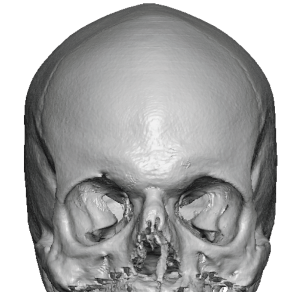Background: Augmenting the upper third of the face often requires a custom implant approach to be optimally effective. There are obvious gender differences in forehead augmentation in which many more men need brow bone coverage than do women. Females rarely need brow bone augmentation with the extension of the implant design in that area for smooth implant edging only. Men, however, often wanted brow bone augmentation as the primary goal and the forehead augmentation above it is for necessary decrease of the backward forehead slope which would be exacerbated by the increased projection of the lower third of the forehead.
In designing custom forehead-brow bone implants for men much focus is understandably at the amount of forehead and brow bone projection that is needed in profile. But this is actually the easiest part of the implant design. How to create the implant footprint and howto blend it in naturally at the sides of the forehead and top of the head is just as important for a natural looking augmentation effect. There is also the shape of the forehead-brow bone augmentation which in men is going to be a bit broader or flatter than then done in women.
In placing custom forehead-brow bone implants they are going to be more challenging than that of a more limited forehead implant. The significant brow bone component makes insertion through the implant more difficult and harder to unroll once inside. The length of the lower ‘legs’ of the implant (tail of the brow bone) onto the lateral orbital rim can determine whether more than just the superior scalp incision is needed to get it properly seated over the bony brow bones.






The combined forehead-brow bone implant adds complexity in both its design and placement. The brow bone component influences the projection of the forehead as well as its overall shape. It also adds stiffness to the implant which make its introduction and proper placement more difficult when trying to keep the scalp incision as small as possible.
Key Points:
1) Most men need a combined forehead-brow bone augmentation for their upper facial aesthetic needs
2) The successful placement of a custom forehead-brow bone implant can be done from a superior scalp incision only if the lateral orbital implant legs are not too long.
3) Most custom forehead-brow bone implants need a longer top of the skull extension to bend in smoothly with the rest of the skull.
Dr. Barry Eppley
World-Renowned Plastic Surgeon








